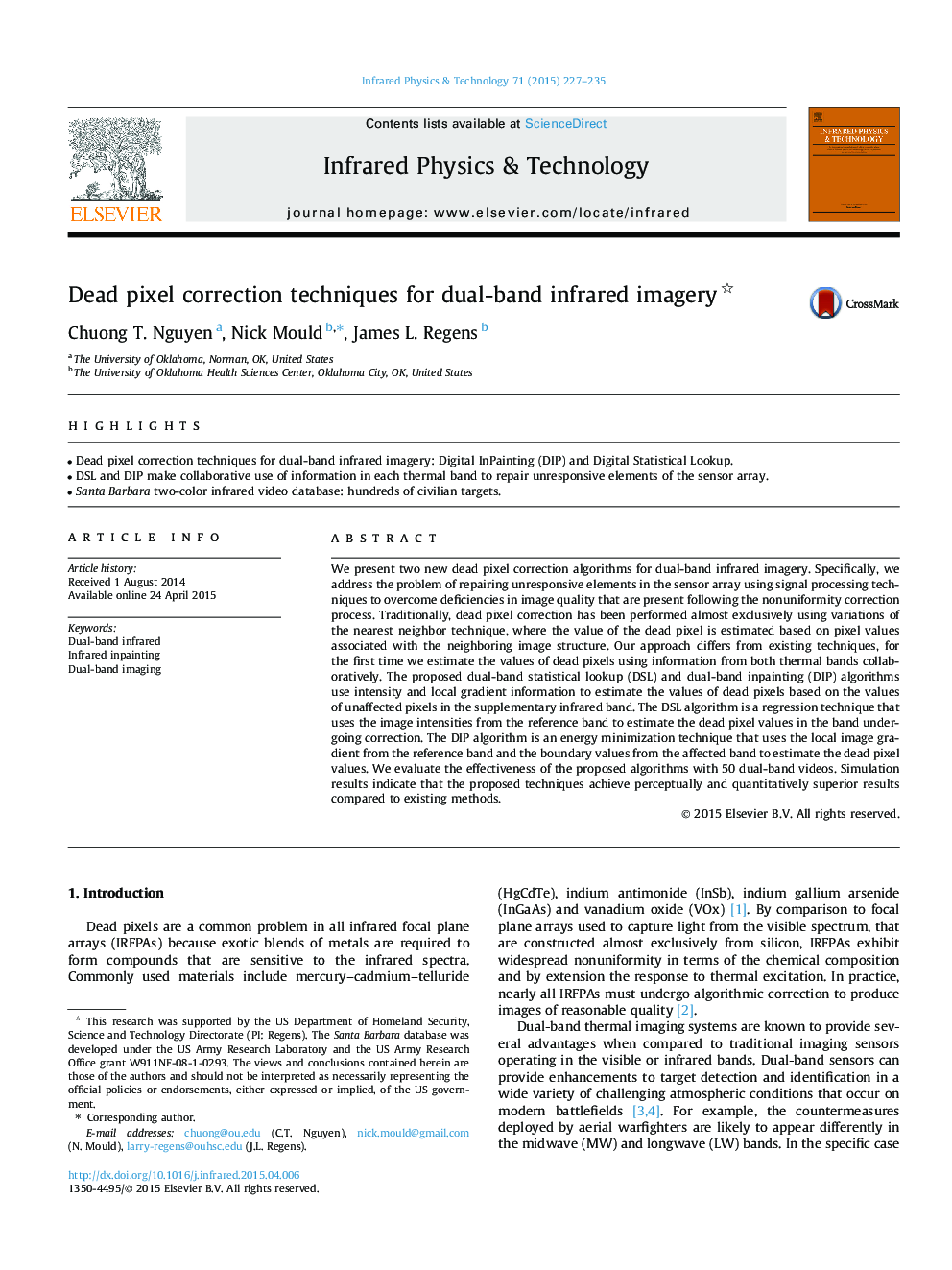| Article ID | Journal | Published Year | Pages | File Type |
|---|---|---|---|---|
| 8146844 | Infrared Physics & Technology | 2015 | 9 Pages |
Abstract
We present two new dead pixel correction algorithms for dual-band infrared imagery. Specifically, we address the problem of repairing unresponsive elements in the sensor array using signal processing techniques to overcome deficiencies in image quality that are present following the nonuniformity correction process. Traditionally, dead pixel correction has been performed almost exclusively using variations of the nearest neighbor technique, where the value of the dead pixel is estimated based on pixel values associated with the neighboring image structure. Our approach differs from existing techniques, for the first time we estimate the values of dead pixels using information from both thermal bands collaboratively. The proposed dual-band statistical lookup (DSL) and dual-band inpainting (DIP) algorithms use intensity and local gradient information to estimate the values of dead pixels based on the values of unaffected pixels in the supplementary infrared band. The DSL algorithm is a regression technique that uses the image intensities from the reference band to estimate the dead pixel values in the band undergoing correction. The DIP algorithm is an energy minimization technique that uses the local image gradient from the reference band and the boundary values from the affected band to estimate the dead pixel values. We evaluate the effectiveness of the proposed algorithms with 50 dual-band videos. Simulation results indicate that the proposed techniques achieve perceptually and quantitatively superior results compared to existing methods.
Related Topics
Physical Sciences and Engineering
Physics and Astronomy
Atomic and Molecular Physics, and Optics
Authors
Chuong T. Nguyen, Nick Mould, James L. Regens,
